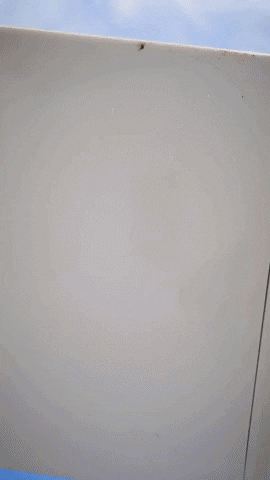Vegetation Penetration: UAS LiDAR and bare earth modeling
- harrisonknoll

- Aug 1, 2019
- 3 min read
Updated: Aug 5, 2019

One of the key benefits to unmanned LiDAR is the ability to peak through vegetation and accurately measure the bare earth. LiDAR is one of few remote sensing technologies that offers this ability. In contrast, photogrammetry will measure the top most surface. For instance if there is a large forest then the model will make the tops of the trees as part of the surface. In this blog post I want to discuss some key aspects of LiDAR acquisition from unmanned aerial systems for the generation of Digital Elevation Models, DEMs.
Click <HERE> to view online dataset
So how does LiDAR penetrate the vegetation? First, it is a misconception that LiDAR penetrates the vegetation. The wavelength of laser radiation from commercial LiDAR sensors fall in the near-infrared spectral range (750nm - 2500nm) . In this region the spongy mesophyll in the plant has a high reflectance. Because of these physical properties of vegetation the NIR laser light will not penetrate the vegetations surface. In fact what is happening is a small piece of the laser beam will see through a crack between the leaves and branches and make it to the bare earth and reflect back through the cracks in the canopy back to the LiDAR sensor. This is pretty spectacular given how dense the foliage looks to the human eye. This brings us to a very important technical spec of LiDAR sensors from different manufacturers. This spec is the measurement of laser returns.

LiDAR Returns
It is a very important fact of each LiDAR sensor. Each time the LiDAR emits a light pulse the laser will travel and the spot size will expand as it traverses more distance. This is a common phenomena that can be experience by pointing a flashlight on something close to you and then something further away. The Spot size will expand the further it is away. Because of this the whole spot won't always fall onto one object. As in the photo to the left we can see the single red laser pulse makes contact with 5 surfaces. Each one of these will return to the LiDAR sensor in time. The first top most return will come in first followed by the next, until the last. This is where the different brands have different methods of measurement. For example Velodyne sensors do first and strongest. This means the first pulse will be measured and then the strongest will be recorded. In contrast the Riegl system does between 5 and 7 full waveform return measurements. This is why for best results, the riegl is the sensor of choice. These 5 returns allow enough opportunity to measure that small amount of light that makes its way to the bare earth and back to the LiDAR sensor.
Ground Point Classification
Post processing LiDAR data can create a number of data products. Arguably the most important to land surveying is the Digital Elevation Model, or commonly referred to as DEM. The DEM is a raster dataset the describes the earth's surface. DEM play an important role as being a digital source of information where other derivative products can be generated, such as contours. It is important to note the information contained in the DEM is more than a contour map. Going from DEM to contour is ok, but contour to DEM and you lose information. The first step in generating the DEM from LiDAR data is classification of ground mass points. Using a combination of automated algorithms and manual editing the ground points are classified. The three images below depict the evolution of the data. First the data is all one class and here i displayed it by elevation. The color image on the left is just elevation. Then the middle image has brown as the ground class. From this ground classification we can begin classifying features such as vegetation above the ground. On the last image I display the green vegetation.
DEM and Contours
Now that we have a ground classified LiDAR dataset we can generate useful data for delivery and use in land surveying. Although our sensor is achieving 5cm accuracy, our typical delivery will be 1 ft DEM and 1 ft contours. The generation of these data products require careful choice in interpolation algorithm. One common choice is the Kriging or Gaussian process regression. This method is needed to create the regularly spaced raster data DEM from the irregularly spaced point cloud.
Conclusion
Unmanned aerial LiDAR provides a perfect dataset to generate bare earth models such as DEMs. The choice in LiDAR sensor technology is important to delivering accurate results, and data processing of the high quality datasets can deliver a number of useful models to land surveying professionals.















Comments